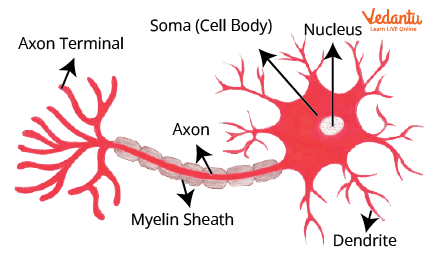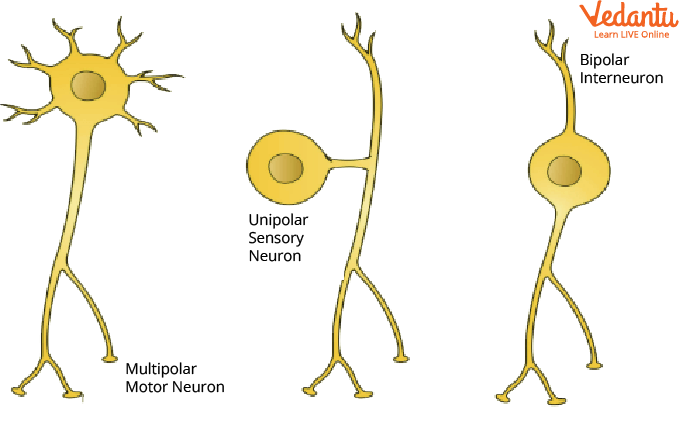




Introduction to Nerve Cell
How well do you recall the location of your body? The truth is that your brain is in charge of your body. It runs the show and manages almost all of your actions, even while you sleep.
Animals use their senses to gather information about their surroundings. The nervous system is a network of nerves and the brain. The nerve cell is a type of cell that sends and receives messages from the body to the brain and back. A weak electrical current transmits the messages. The body's nerves pick up the information. The brain processes the information, instructing it on how to respond.
Nerve cell diagrams are also illustrated below for your better understanding. You can find more information in this article as you read it further.
Parts of a Neuron
The brain is composed of approximately 86 billion nerve cells (also called "neurons"). A neuron is made up of four basic components: Dendrites, the cell body (also known as the "soma"), the axon, and the axon terminal.
Dendrites: Dendrites are neuron cell body extensions that carry information to the cell body. Dendrites typically branch near the cell body.
The Cell Body: The cell body (soma) is the portion of the cell that houses the nucleus.
Axon: A neuron cell body extension that transports information away from the cell body. A single axon emerges from the cell body.
Axon Terminal: Axon terminal is the end of an axon that makes a synaptic connection with another cell. The nerve cell diagram is shown below to understand the neuron parts better.

Nerve Cell
Function of Neurons
Neurons (also known as neurones or nerve cells) are the basic units of the brain and nervous system, responsible for receiving sensory input from the outside world, sending motor commands to our muscles, and transforming and relaying electrical signals at every step in between.
Types of Neurons
There are three types of neurons: Sensory, Motor, and Interneurons.
Sensory Neurons
Sensory neurons send information to the central nervous system from sensory receptors (such as those in the skin, eyes, nose, tongue, and ears).
Motor Neurons
Motor (or efferent) neurons send information toward the muscles or glands from the central nervous system.

Motor Nerve
Interneurons
Interneurons transmit data between sensory and motor neurons. The central nervous system contains the majority of interneurons.

Interneuron
Summary
The brain is in charge of all bodily functions. The spinal cord connects the brain to the back of the body. It is made up of threadlike nerves that connect to every organ and body part. This network of nerves relays messages from the brain to various parts of the body.
Neurons are the cells of the nervous system. They are composed of three distinct parts: a cell body, an axon, and dendrites. These components aid in the transmission and reception of chemical and electrical signals. While there are billions of neurons and thousands of different types of neurons, they can be divided into three functional groups: motor neurons, sensory neurons, and interneurons.
FAQs on Neurons and Its Parts
1. What is a neuron and what are the three types of neurons?
Spinal cord is made up of strands of nerves that branch out to every organ and part of the body. The brain sends and receives messages via this network of nerves to various parts of the body. Neurons are types of these nerve cells. They transport electrical signals throughout your body. Your body's other cells do not resemble nerve cells in appearance. They have peculiar components known as dendrites and axons. The three types of neurons are sensory nerve, motor nerve, and interneurons.
2. What is the largest cranial nerve?
The longest cranial nerve in the body, the vagus nerve (cranial nerve), has both afferent and efferent both motor and sensory functions. The nerve travels throughout the body, affecting many organ systems and regions, including the tongue, pharynx, heart, and gastrointestinal system. The vagus nerve has several clinical correlations due to its wide distribution throughout the body. The vagus nerve originates in the medulla oblongata and exits the skull through the jugular foramen.
3. Which is the longest neuron in the body?
The longest axons of the human body are those that make up the sciatic nerve where the length can exceed one meter.









